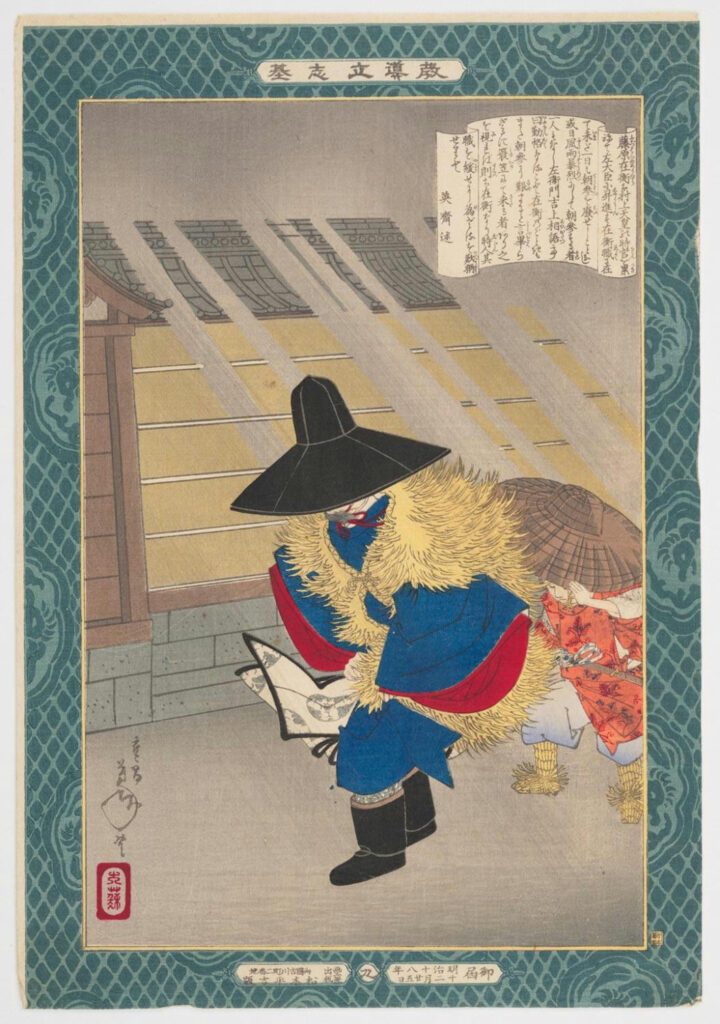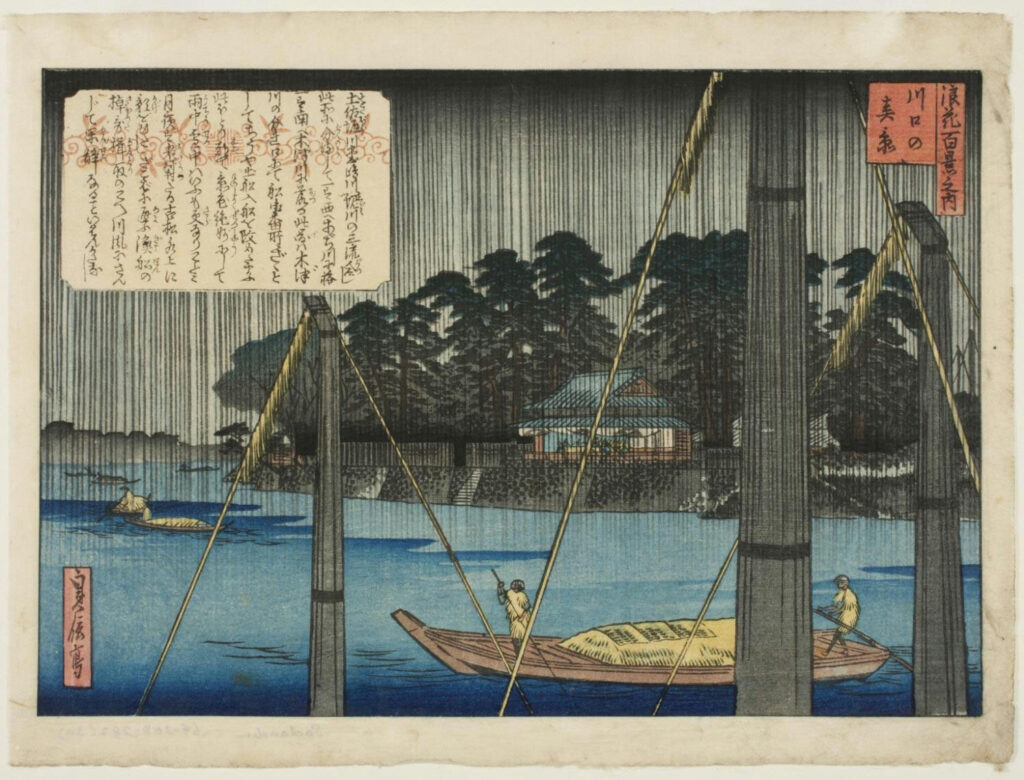Chola Bronzes: Devotion in Metal
The bronze sculptures of the Chola period are among the most refined and enduring achievements of Indian statuary. Created between the 9th and 13th...
Maya M. Tola 12 June 2025
Although Japanese weather varies greatly across the archipelago, the abundance of rain throughout the year remains a common phenomenon across Japan. The typical monsoon season known as tsuyu, is marked by heavy summer rains for around six weeks in June and July. Typhoon or taifu season generally occurs around Fall and is accompanied by a torrential downpour. As with many agrarian societies, rains were accurately perceived as a blessing and a necessity. The Japanese language evolved to encompass a plethora of words to describe the various different types of rain. Poetry was developed to memorialize the importance of rain from a cultural perspective and artistic traditions have followed suit to describe this sentiment of awe and wonder in form of woodblock prints. Discover the rain in Japanese art with us!

Tsukioka Yoshitoshi, Fujiwara no Arihira Walking in the Rain, c. 1885, Philadelphia Museum of Art, Philadelphia, PA, USA.
Ukiyo-e or traditional woodblock printing primarily originated in the Edo period. Rain was a reoccurring subject for many ukiyo-e artists around the 19th century, and the artists developed a variety of specialized techniques to depict different types of rain. These highly detailed works evoked a bittersweet sense of nostalgia and serenity. While many artists contributed to this incredible collection of works, here are some noteworthy artists.
Utagawa Hiroshige (1797–1858) was a respected landscapist known for his detailed works, many of which featured rain. He gained prominence both in Japan and overseas and earned the moniker “the poet of rain”. Prussian blue was known as Hiroshige Blue due to its extensive use in his works. He is credited for having inspired Japonisme, the study of Japanese artistic culture that proliferated around the 1800s in Europe and had a significant impact on the Impressionist movement.
Hiroshige designed two extremely popular series of woodblock works: Fifty-three Stations of the Tōkaidō and One Hundred Famous Views of Edo.
Hasui Kawase (1883–1957) was known for his depictions in the shin-hanga, or new prints movement, which depicted nostalgic Japanese subjects in a Western style. Kawase employed muted tones to create atmospheric compositions that evoke a calm sense of tranquility. He was best known for his spectacular snow, rain, and night scenes. These views laid heavy emphasis on the landscape with figures either absent or relatively insignificant.
Kawase gained international acclaim in his long career of over 40 years. Unfortunately, a bulk of Kawase’s works were destroyed when a devastating earthquake in 1923 destroyed his studio. However, several works have been preserved in museums and private collections all over the world. In 1956, in acknowledgement of his outstanding career, Kawase was named a Living National Treasure by the Japanese Government.
Tsuchiya Koitsu (1870–1949) was apprenticed to an ukiyo-e master Kobayashi Kiyochika for 19 long years where he studied the art of woodblock printing. His initial works were depictions of the Sino-Japanese war, and he also worked as a lithographer. A chance meeting with the publisher Watanabe Shozaburo in 1931 changed the course of his career, and he turned his focus to landscape prints depicted in the shin-hanga style.
The captivating works showcase his mastery of light and shadow to create detailed renditions of the captivating beauty of Japan.
Torii Kiyonaga (1752–1815), known originally as Sekiguchi Shinsuke, was a revered Japanese artist of the ukiyo-e movement. He made his mark on the tradition with his skillful figurative works that showcased his thorough understanding of the human body. His works often featured beautiful women with delicate features that are set in idealized settings often adorned with grand architectural structures and idealized landscapes.
Born Suzuki Chinpei, Utagawa Hiroshige II (1826–1869) inherited the name from his father-in-law and master upon his demise in 1858. His work closely resembles that of Utagawa Hiroshige in subject matter and style and has often been confused by experts and scholars.
Hiroshige II ended his marriage with his master’s daughter around 1865 and then adopted the name Kisai Risshō. Interestingly, another pupil of Hiroshige I then married his daughter, Otatsu, now known by art historians as Hiroshige III.

Hasegawa Sadanobu I, Rain at the Mouth of the Aji River, ca. 1850s. Philadelphia Museum of Art, Philadelphia, PA, USA.
While these works are diverse in their settings and themes, these woodblock prints have common themes, such as sudden or unexpected rain showers. These works comprise generic depictions of daily life in a poetic and soulful rendition that evokes a deep sense of nostalgia. Ukiyo-e works featuring rain are spread across museums and private collections all over the world!
DailyArt Magazine needs your support. Every contribution, however big or small, is very valuable for our future. Thanks to it, we will be able to sustain and grow the Magazine. Thank you for your help!